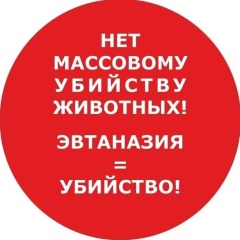Вы не умеете тушить костры.
Я уже 4 года время от времени гуляю в лес, и наблюдаю непотушенные костры значительно чаще, чем хотелось бы. Я видел костер, затушенный вчера вечером, переживший ночь, и наутро из него показывались язычки пламени - которые и привлекли внимание нашей группы, проходившей мимо. Я видел, как залитый мною же костер, за то время, пока мы собираем остатки вещей, снова начинает дымить. Мне доводилось, придя на стоянку, разводить костер без спичек (!) в едва теплом, на первый взгляд, кострище - просто засыпав кострище сухой хвоей. Я видел костер, брошенный непогашенным профессиональной спортивной туристической группой. Я видел культурную группу финнов (!!!) на берегу Ладожского озера, видел, как вежливо они себя вели на стоянке, хоть их и было человек 20 на 8-ми джипах, как аккуратно они забрали после себя весь мусор и оставили стоянку в идеальной чистоте - но через 20 минут после их отъезда я заметил открытый огонь в их кострище. И почти каждый раз в походе, особенно если не я руководитель, на меня ругаются товарищи: "Сколько можно воду лить, не горит же уже, пошли, тебя одного все ждут".
В данном контексте я прихожу к выводу, что лесные люди, даже самые сознательные и ответственные, зачастую банально не умеют (!) тушить костер. Считается, что вылить ведро воды на костер вполне достаточно. В крайнем случае, два. Так вот - нет, этого недостаточно. Сейчас объясню, почему.
Пункт нулевой. Если из костра не вырывается пламя - это еще не значит, что процесс горения не происходит. Тлеющие угли способны гореть сутками, и при этом они едва ли будут светиться.
- Если вы не видите в костре языков пламени - это еще НЕ ЗНАЧИТ, что костер потушен.
Пункт первый. Горящий костер имеет свойство трещать и дымить. Почему он это делает? Потому что в дровах скапливается влага. В горящем костре она закипает и превращается в пар. Дым, который вы видите глазами - это тот самый пар. Треск, который вы слышите - это пар резко выхлопывает из мелких трещинок в дровах. Если пар выходит не резко - он свистит. Шипение - это, как правило, звук кипящей воды. Сухие дрова, как правило, горят почти без дыма и шума. Чем более влажные дрова, тем больше они дымят и трещат. А вода у нас закипает при 100 градусах по Цельсию, если кто помнит.
Итак
- Если от костра идет дым, даже самый маленький - костер ТОЧНО ГОРИТ. Т.е. в глубине костра есть какая-то область, где температура выше 100 градусов и где кипит вода.
- Если костер потрескивает или шипит - костер ТОЧНО ГОРИТ
- Если вы вылили на костер воду, и она сделала "пщщщщ" - костер ТОЧНО ГОРИТ. Пщщщ - это кипит вода, которую вы только что вылили.
Пункт второй. Костер имеет свойство прогреваться еще и вглубь. Особенно, если вы разводите его на песке или в камнях, как это обычно бывает. Камни и песок очень хорошо держат температуру. Когда вы выливаете на костер ведро воды, зачастую вода даже не успевает добраться до всех горячих точек, чтобы их потушить. Не говоря уже о том, что камни очень (!) хорошо держат температуру, и остудить камень одним ведром воды зачастую просто невозможно.
Поэтому
- При заливке костер ОБЯЗАТЕЛЬНО НУЖНО РАСКОПАТЬ И РАЗВОРОШИТЬ. Часто бывает, что костер вроде снаружи уже холодный, а раскапываешь - внутри еще горящие угли.
- ПРОЛИТЬ - РАЗВОРОШИТЬ - ПРОЛИТЬ ЕЩЕ РАЗ - РАЗВОРОШИТЬ. ПОВТОРЯТЬ до тех пор, пока костер не станет полностью холодным, пока очередная порция воды не перестанет шипеть. Не бойтесь перелить воды, она уйдет в песок через полчаса, следующая группа никак не пострадает.
- Если у вас в костре КАМНИ - ПРОЛИТЬ их отдельно. При необходимости стоит разворошить камни и пролить до тех пор, пока они не остынут. Осторожно - камни могут трескаться при резком охлаждении водой, особенно если это кирпичи.
- ВОДЫ МНОГО НЕ БЫВАЕТ. Часто мне говорят, мол, зальешь кострище водой, следующая группа не сможет здесь развести костер. Во-первых, если не сможет, нехрен этой группе делать в лесу. Во-вторых, я еще ни разу не видел, приходя на стоянку, чтобы кострище было залито водой даже в дождь. Зимой только видел. Все потому, что само место под костер обычно выбирается так, чтобы вода из него вытекала. В противном случае у вас в костре всегда будет лужа, и, действительно, вряд ли вы там что-то разожжете.
Не далее как в прошлом году под Выборгом своими глазами за одни выходные видел три лесных пожара. Один из них - в 3 км от города.
Тушите костры тщательно и грамотно.
Я уже 4 года время от времени гуляю в лес, и наблюдаю непотушенные костры значительно чаще, чем хотелось бы. Я видел костер, затушенный вчера вечером, переживший ночь, и наутро из него показывались язычки пламени - которые и привлекли внимание нашей группы, проходившей мимо. Я видел, как залитый мною же костер, за то время, пока мы собираем остатки вещей, снова начинает дымить. Мне доводилось, придя на стоянку, разводить костер без спичек (!) в едва теплом, на первый взгляд, кострище - просто засыпав кострище сухой хвоей. Я видел костер, брошенный непогашенным профессиональной спортивной туристической группой. Я видел культурную группу финнов (!!!) на берегу Ладожского озера, видел, как вежливо они себя вели на стоянке, хоть их и было человек 20 на 8-ми джипах, как аккуратно они забрали после себя весь мусор и оставили стоянку в идеальной чистоте - но через 20 минут после их отъезда я заметил открытый огонь в их кострище. И почти каждый раз в походе, особенно если не я руководитель, на меня ругаются товарищи: "Сколько можно воду лить, не горит же уже, пошли, тебя одного все ждут".
В данном контексте я прихожу к выводу, что лесные люди, даже самые сознательные и ответственные, зачастую банально не умеют (!) тушить костер. Считается, что вылить ведро воды на костер вполне достаточно. В крайнем случае, два. Так вот - нет, этого недостаточно. Сейчас объясню, почему.
Пункт нулевой. Если из костра не вырывается пламя - это еще не значит, что процесс горения не происходит. Тлеющие угли способны гореть сутками, и при этом они едва ли будут светиться.
- Если вы не видите в костре языков пламени - это еще НЕ ЗНАЧИТ, что костер потушен.
Пункт первый. Горящий костер имеет свойство трещать и дымить. Почему он это делает? Потому что в дровах скапливается влага. В горящем костре она закипает и превращается в пар. Дым, который вы видите глазами - это тот самый пар. Треск, который вы слышите - это пар резко выхлопывает из мелких трещинок в дровах. Если пар выходит не резко - он свистит. Шипение - это, как правило, звук кипящей воды. Сухие дрова, как правило, горят почти без дыма и шума. Чем более влажные дрова, тем больше они дымят и трещат. А вода у нас закипает при 100 градусах по Цельсию, если кто помнит.
Итак
- Если от костра идет дым, даже самый маленький - костер ТОЧНО ГОРИТ. Т.е. в глубине костра есть какая-то область, где температура выше 100 градусов и где кипит вода.
- Если костер потрескивает или шипит - костер ТОЧНО ГОРИТ
- Если вы вылили на костер воду, и она сделала "пщщщщ" - костер ТОЧНО ГОРИТ. Пщщщ - это кипит вода, которую вы только что вылили.
Пункт второй. Костер имеет свойство прогреваться еще и вглубь. Особенно, если вы разводите его на песке или в камнях, как это обычно бывает. Камни и песок очень хорошо держат температуру. Когда вы выливаете на костер ведро воды, зачастую вода даже не успевает добраться до всех горячих точек, чтобы их потушить. Не говоря уже о том, что камни очень (!) хорошо держат температуру, и остудить камень одним ведром воды зачастую просто невозможно.
Поэтому
- При заливке костер ОБЯЗАТЕЛЬНО НУЖНО РАСКОПАТЬ И РАЗВОРОШИТЬ. Часто бывает, что костер вроде снаружи уже холодный, а раскапываешь - внутри еще горящие угли.
- ПРОЛИТЬ - РАЗВОРОШИТЬ - ПРОЛИТЬ ЕЩЕ РАЗ - РАЗВОРОШИТЬ. ПОВТОРЯТЬ до тех пор, пока костер не станет полностью холодным, пока очередная порция воды не перестанет шипеть. Не бойтесь перелить воды, она уйдет в песок через полчаса, следующая группа никак не пострадает.
- Если у вас в костре КАМНИ - ПРОЛИТЬ их отдельно. При необходимости стоит разворошить камни и пролить до тех пор, пока они не остынут. Осторожно - камни могут трескаться при резком охлаждении водой, особенно если это кирпичи.
- ВОДЫ МНОГО НЕ БЫВАЕТ. Часто мне говорят, мол, зальешь кострище водой, следующая группа не сможет здесь развести костер. Во-первых, если не сможет, нехрен этой группе делать в лесу. Во-вторых, я еще ни разу не видел, приходя на стоянку, чтобы кострище было залито водой даже в дождь. Зимой только видел. Все потому, что само место под костер обычно выбирается так, чтобы вода из него вытекала. В противном случае у вас в костре всегда будет лужа, и, действительно, вряд ли вы там что-то разожжете.
Не далее как в прошлом году под Выборгом своими глазами за одни выходные видел три лесных пожара. Один из них - в 3 км от города.
Тушите костры тщательно и грамотно.
You don't know how to put out fires.
For 4 years now, I have been walking in the forest from time to time, and I have seen fires that are not extinguished much more often than I would like. I saw a fire that was extinguished last night, survived the night, and the next morning, tongues of flame appeared from it - which attracted the attention of our group passing by. I saw how the fire poured by me, during the time while we collect the remains of things, starts to smoke again. When I came to the parking lot, I had a chance to make a fire without matches (!) In a fire, which at first glance was barely warm, just covering the fire with dry needles. I saw a bonfire thrown by an outstanding professional sports travel group. I saw a cultural group of Finns (!!!) on the shores of Lake Ladoga, I saw how politely they behaved in the parking lot, even though there were 20 people in 8 jeeps, how carefully they took away all the trash after themselves and left the parking lot in an ideal cleanliness - but 20 minutes after they left I noticed an open fire in their fireplace. And almost every time on a campaign, especially if I am not the leader, my comrades swear at me: "How much water can you pour, it doesn't burn already, let's go, everyone is waiting for you alone."
In this context, I come to the conclusion that forest people, even the most conscientious and responsible, often do not know how (!) To put out a fire. It is believed that pouring a bucket of water over the fire is enough. As a last resort, two. So - no, this is not enough. Let me explain why.
Point zero. If the flame does not burst out of the fire, this does not mean that the combustion process does not occur. Smoldering coals are capable of burning for days, and at the same time they will hardly glow.
- If you do not see tongues of flame in the fire, it does NOT MEAN that the fire is extinguished.
Point one. A burning fire tends to crackle and smoke. Why is he doing this? Because moisture accumulates in the wood. In a burning fire, it boils and turns into steam. The smoke that you see with your eyes is the same steam. The crackling sound that you hear is steam coming out of small cracks in the wood. If the steam does not come out abruptly, it whistles. A hiss is usually the sound of boiling water. Dry firewood usually burns almost without smoke or noise. The wetter the wood, the more it smokes and cracks. And our water boils at 100 degrees Celsius, if anyone remembers.
so
- If smoke comes from the fire, even the smallest, the fire EXACTLY BURNS. Those. in the depths of the fire there is some area where the temperature is above 100 degrees and where the water is boiling.
- If the fire crackles or hisses, the fire IS EXACTLY BURNING
- If you poured water on the fire, and she did "pshschsch" - the fire EXACTLY BURNS. Pshshch - this is the boiling water that you just poured.
Second point. The bonfire also tends to warm up in depth. Especially if you breed it on sand or rocks, as is usually the case. Stones and sand keep the temperature very well. When you pour a bucket of water onto a fire, often the water does not even have time to reach all the hot spots to extinguish them. Not to mention the fact that the stones keep the temperature very (!) Well, and it is often simply impossible to cool the stone with one bucket of water.
therefore
- When pouring, the fire MUST BE DIGGED AND SPREADED. It often happens that a fire seems to be cold outside, but when you dig it, there are still burning coals inside.
- SPILL - SPREAD - SPILL AGAIN - SPREAD. REPEAT until the fire is completely cold, until more water stops sizzling. Do not be afraid to pour water, it will go into the sand in half an hour, the next group will not suffer in any way.
- If you have STONES in your fire - SPILL them separately. If necessary, stir up the stones and spill until they cool down. Caution - stones can crack when suddenly cooled by water, especially if they are bricks.
- WATER DOES NOT HAVE A LOT. They often tell me, they say, if you fill a fire pit with water, the next group will not be able to make a fire here. First of all, if he can't, fuck this group to do in the forest. Secondly, I have never seen, coming to the parking lot, that the fireplace was flooded with water even in the rain. In winter I only saw it. This is because the very place for the fire is usually chosen so that water flows out of it. Otherwise, there will always be a puddle in your fire, and, indeed, you are unlikely to light something there.
As recently as last year near Vyborg I saw three forest fires with my own eyes in one weekend. One of them is 3 km from the city.
Put out fires carefully and competently.
For 4 years now, I have been walking in the forest from time to time, and I have seen fires that are not extinguished much more often than I would like. I saw a fire that was extinguished last night, survived the night, and the next morning, tongues of flame appeared from it - which attracted the attention of our group passing by. I saw how the fire poured by me, during the time while we collect the remains of things, starts to smoke again. When I came to the parking lot, I had a chance to make a fire without matches (!) In a fire, which at first glance was barely warm, just covering the fire with dry needles. I saw a bonfire thrown by an outstanding professional sports travel group. I saw a cultural group of Finns (!!!) on the shores of Lake Ladoga, I saw how politely they behaved in the parking lot, even though there were 20 people in 8 jeeps, how carefully they took away all the trash after themselves and left the parking lot in an ideal cleanliness - but 20 minutes after they left I noticed an open fire in their fireplace. And almost every time on a campaign, especially if I am not the leader, my comrades swear at me: "How much water can you pour, it doesn't burn already, let's go, everyone is waiting for you alone."
In this context, I come to the conclusion that forest people, even the most conscientious and responsible, often do not know how (!) To put out a fire. It is believed that pouring a bucket of water over the fire is enough. As a last resort, two. So - no, this is not enough. Let me explain why.
Point zero. If the flame does not burst out of the fire, this does not mean that the combustion process does not occur. Smoldering coals are capable of burning for days, and at the same time they will hardly glow.
- If you do not see tongues of flame in the fire, it does NOT MEAN that the fire is extinguished.
Point one. A burning fire tends to crackle and smoke. Why is he doing this? Because moisture accumulates in the wood. In a burning fire, it boils and turns into steam. The smoke that you see with your eyes is the same steam. The crackling sound that you hear is steam coming out of small cracks in the wood. If the steam does not come out abruptly, it whistles. A hiss is usually the sound of boiling water. Dry firewood usually burns almost without smoke or noise. The wetter the wood, the more it smokes and cracks. And our water boils at 100 degrees Celsius, if anyone remembers.
so
- If smoke comes from the fire, even the smallest, the fire EXACTLY BURNS. Those. in the depths of the fire there is some area where the temperature is above 100 degrees and where the water is boiling.
- If the fire crackles or hisses, the fire IS EXACTLY BURNING
- If you poured water on the fire, and she did "pshschsch" - the fire EXACTLY BURNS. Pshshch - this is the boiling water that you just poured.
Second point. The bonfire also tends to warm up in depth. Especially if you breed it on sand or rocks, as is usually the case. Stones and sand keep the temperature very well. When you pour a bucket of water onto a fire, often the water does not even have time to reach all the hot spots to extinguish them. Not to mention the fact that the stones keep the temperature very (!) Well, and it is often simply impossible to cool the stone with one bucket of water.
therefore
- When pouring, the fire MUST BE DIGGED AND SPREADED. It often happens that a fire seems to be cold outside, but when you dig it, there are still burning coals inside.
- SPILL - SPREAD - SPILL AGAIN - SPREAD. REPEAT until the fire is completely cold, until more water stops sizzling. Do not be afraid to pour water, it will go into the sand in half an hour, the next group will not suffer in any way.
- If you have STONES in your fire - SPILL them separately. If necessary, stir up the stones and spill until they cool down. Caution - stones can crack when suddenly cooled by water, especially if they are bricks.
- WATER DOES NOT HAVE A LOT. They often tell me, they say, if you fill a fire pit with water, the next group will not be able to make a fire here. First of all, if he can't, fuck this group to do in the forest. Secondly, I have never seen, coming to the parking lot, that the fireplace was flooded with water even in the rain. In winter I only saw it. This is because the very place for the fire is usually chosen so that water flows out of it. Otherwise, there will always be a puddle in your fire, and, indeed, you are unlikely to light something there.
As recently as last year near Vyborg I saw three forest fires with my own eyes in one weekend. One of them is 3 km from the city.
Put out fires carefully and competently.

У записи 39 лайков,
4 репостов,
1249 просмотров.
4 репостов,
1249 просмотров.
Эту запись оставил(а) на своей стене Владимир Шалимов

























































